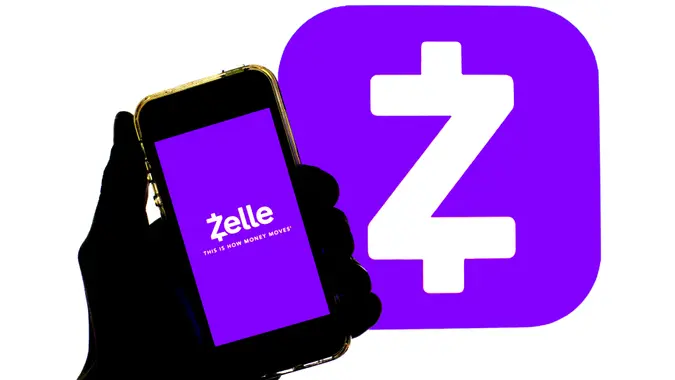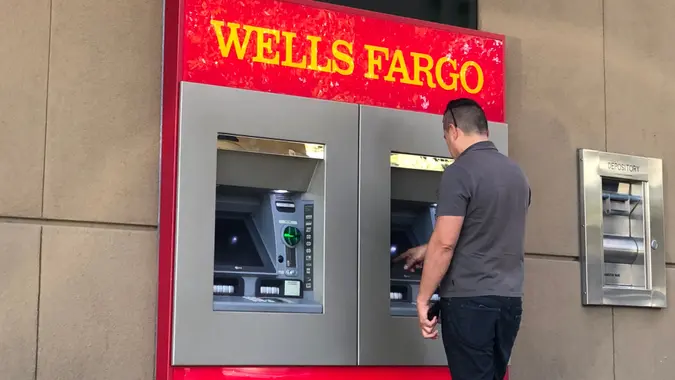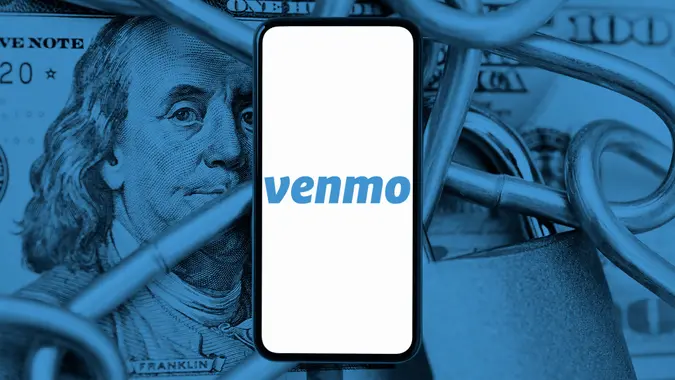Is Wise Safe? What You Need To Know Before Sending Money

Commitment to Our Readers
GOBankingRates' editorial team is committed to bringing you unbiased reviews and information. We use data-driven methodologies to evaluate financial products and services - our reviews and ratings are not influenced by advertisers. You can read more about our editorial guidelines and our products and services review methodology.

20 Years
Helping You Live Richer

Reviewed
by Experts

Trusted by
Millions of Readers
When it comes to international money transfers, many people want to know if Wise is safe to use.
Formerly known as TransferWise, the platform has become one of the largest global payment providers, moving £145.2 billion across borders in 2025 and serving 15.6 million active customers worldwide.
Its low fees and real exchange rates make it popular, but understanding how secure it is — and where protections apply — can help you decide if it’s the right choice for your money.
What Is Wise and How Does It Work?
Wise is a U.K.-based fintech company built specifically for international payments. You can use it to send, receive, and hold money in over 40 currencies. Unlike traditional banks, it’s designed to give customers the real mid-market exchange rate with transparent, low fees.
Instead of moving your money directly across borders, which is expensive and slow, Wise uses “smart routing.” You pay into a local Wise account, it matches that payment with someone sending money the other direction, and then it pays your recipient locally. This system is why transfers are often faster and cheaper than bank wires.
Who Wise Works Best For
- People sending small- to mid-size international transfers (under $50,000)
- Paying freelancers or small businesses abroad
- Travelers, expats and digital nomads managing multiple currencies
- Anyone who wants transparent exchange rates with no hidden markups
Is Wise Safe? A Closer Look
Regulated in Multiple Countries
Wise is licensed and regulated wherever it operates. That includes:
- United States: Registered with the Financial Crimes Enforcement Network (FinCEN) and licensed as a money transmitter in 48 states and Washington, D.C., overseen by local regulators.
- United Kingdom: Authorized by the Financial Conduct Authority (FCA).
- European Union: Supervised by national regulators across EU countries.
This means Wise is held to strict financial and compliance standards globally.
Is Wise FDIC Insured?
This is where things get nuanced. Wise itself is not a bank, so customer funds aren’t automatically FDIC insured. However, if you opt in to earn interest on USD, GBP or EUR balances, Wise places those funds with partner banks where you’re eligible for pass-through FDIC insurance up to $250,000 per depositor, per bank.
For balances outside those currencies or if you haven’t opted in, Wise safeguards your funds by holding them in segregated accounts at trusted financial institutions.
Security Measures Wise Uses
Wise protects customer money and data with:
- End-to-end encryption for all transfers and personal information
- Two-factor authentication (2FA) for logins and payments
- Real-time tracking so you can follow every transfer step
- Regular independent audits to verify transparency and compliance
When Wise Is a Safe Choice
- Sending small transfers to friends or family overseas
- Paying international freelancers or small suppliers
- Converting currency at the mid-market rate
- Managing multi-currency balances for travel or remote work
In fact, over 60% of Wise transfers arrive within 24 hours, faster than most banks for cross-border payments.
When To Be Cautious Using Wise
Wise is safe, but there are scenarios where you might want to think twice:
- Large transfers above FDIC coverage levels — deposit insurance may not apply unless funds are in opt-in interest accounts
- Urgent, time-sensitive payments — most arrive fast, but not instantly
- User error — sending to the wrong account can be hard to reverse
- Speculative investing or crypto — Wise isn’t built for high-risk trading
Wise vs. Other Money Transfer Options
| Provider | Regulated? | FDIC Protection | Transfer Fees | Speed | Exchange Rates |
|---|---|---|---|---|---|
| Wise | Yes (FCA, FinCEN, state regulators) | Optional (if opted-in on USD/GBP/EUR balances) | Low | 1 to 2 days | Mid-market rate |
| PayPal | Yes | No | Higher | Instant | Above market rates |
| Bank Wire | Yes | Yes (U.S.) | High | 2 to 5 days | Bank-set rates |
Bottom line: Banks may be better for very large sums because of FDIC insurance, but Wise usually beats both PayPal and banks on fees, speed, and transparency.
Tips to Use Wise More Securely
- Send only to trusted recipients
- Double-check all account details before confirming
- Enable two-factor authentication and SMS/email alerts
- Avoid using public Wi-Fi when making transfers
Final Take to GO: Is Wise Safe for Your Money?
So, is Wise safe? For most people, the answer is yes. With 15.6 million active users worldwide and strict regulation from FinCEN, FCA and EU regulators, Wise has proven itself as a secure platform for international transfers. Its fees are low, exchange rates are transparent and transfers are typically much faster than banks.
That said, it’s not a substitute for a bank when it comes to large deposits or guaranteed insurance across all currencies. If you need FDIC protection, you’ll have to opt into interest on supported currencies. For everyday global payments, though, Wise remains one of the safest and most cost-effective ways to move your money abroad.
FAQs: Wise Safety & Legitimacy
Here are the answers to some of the most frequently asked questions regarding questions around if Wise is safe.- Is Wise safe for large money transfers?
- Yes, Wise is fully regulated and secure. However, for large transfers, always double-check the recipient details before confirming.
- What happens if my Wise transfer gets delayed or lost?
- If a transfer is delayed, Wise notifies you with an estimated time frame. If a transfer gets lost, Wise will work to recover or refund your money.
- How does Wise protect against fraud?
- Wise uses encryption, 2FA and fraud monitoring to keep accounts safe and flag suspicious transactions.
- Can I get my money back if I’m scammed on Wise?
- If a transfer has already been completed, Wise may not be able to recover your money. Always verify who you’re sending money to before making a transfer.
- Is Wise better than PayPal for international transfers?
- Wise offers better exchange rates and lower fees than PayPal, but PayPal provides buyer protection, making it better for online purchases.
Information is accurate as of Aug. 26, 2025.
Editorial Note: This content is not provided by any entity covered in this article. Any opinions, analyses, reviews, ratings or recommendations expressed in this article are those of the author alone and have not been reviewed, approved or otherwise endorsed by any entity named in this article.
Editor's note: This article was produced via automated technology and then fine-tuned and verified for accuracy by a member of GOBankingRates' editorial team.
Our in-house research team and on-site financial experts work together to create content that’s accurate, impartial, and up to date. We fact-check every single statistic, quote and fact using trusted primary resources to make sure the information we provide is correct. You can learn more about GOBankingRates’ processes and standards in our editorial policy.
- Wise.com "website"
- Consumer Financial Protection Bureau "Money Transfers"
- Wise.com "How is Wise regulated in each country and region?"
- Federal Trade Commission "Use Two-Factor Authentication To Protect Your Accounts"
- Wise.com "Am I eligible for a refund?"
 Written by
Written by  Edited by
Edited by 
























